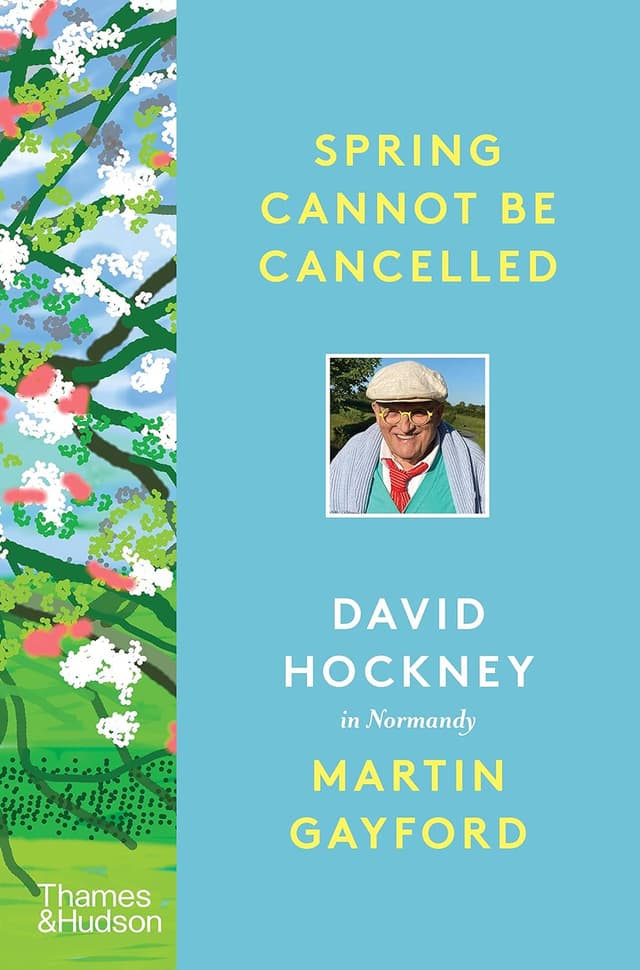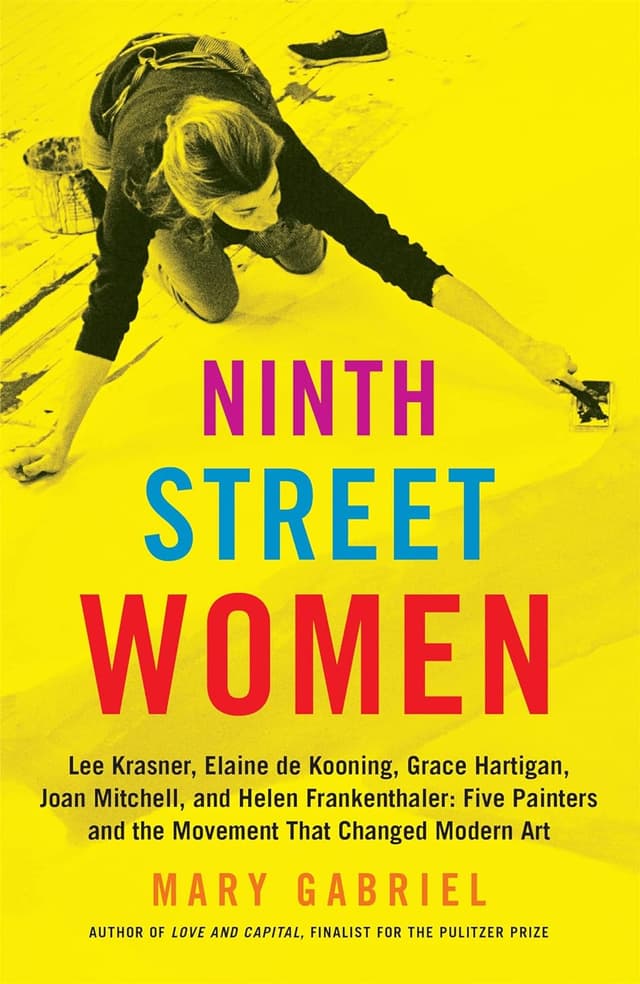Martin Thörnkvist | May 2, 2022
The Monday Media Diet with Martin Thörnkvist
On Beirut, Svenska dagbladet, and Shannon Mattern
Recommended Products

A diary-like journey of how artist David Hockney, in his eighties, uses the seasonal changes of a year in one specific place as his muse. Discusses Hockney's daily painting routine and his views on marks, photography, Monet, and Van Gogh.

A book about the development of the New York art scene in the 1950s through the lens of artists who have only recently started to receive the attention they deserve.
Martin (MT) is a longstanding friend of WITI. He’s an amazing thinker, curator, and network builder based in Malmo, Sweden. Right now, he’s COO of Media Evolution and The Conference and also organized a great conference in Beirut called Hours.
Tell us about yourself.
I identify as a context maker. Curation is the red thread of my work-life. The material has varied from music (fanzine, festival, live clubs, and record label) to human insights and experiences (conferences and events). I say context maker because I’ve realized that content plays a very limited role in the success of curation. It’s a necessity for there to be something, but the success of a magazine, festival, conference, exhibition, and so on comes down to the curator’s capability to put the content in a meaningful context. It’s about care, affection, sense-making, hospitality, world-building, and attention to detail. That’s what I aspire to be good at.
I live in Malmö, Sweden, where I work as the COO at the members owned non-profit organization Media Evolution that organizes The Conference, is the host of a community-based place for work, and run community-wide futures thinking processes in the shape of collaborative foresight.
Describe your media diet.
News-based, newsletter-driven, and powered by curiosity. For news my I start in the place where I live, staying up to date with the local politics, sports, and culture of my community thru the work of Sydsvenskan – an impressively good newspaper for or being based in a city of 300 000 people. I guess that it’s to some extent due to the punching-over-ones-weight effect that being the third biggest city in a country can provide – this is something I adore about the small scale high ambition quality of this remote part of the world. On a national news level, Stockholm-based Svenska Dagbladet is killing it at the moment. Domestic politics reporters Torbjörn Nilsson and Maggie Strömblad are setting a new standard for getting under the skin of the complex decisions the leadership of our country has to deal with. On the finance side of things, my dear friend Björn Jeffery is setting big tech in context, often in making connections to phenomena in popular culture in a quite unique way. And, then I skim the NYT for global politics and Jason Farago’s writing on art.
For in-depth observations, I rely heavily on the service of a couple of newsletter curators. Patrick Tanguay’s Sentiers for systems thinking, Kristoffer Tjalve’s Naive Weekly for all the quirky artsy stuff that people are still making with HTML etc, Lean Luxe and TheFutureParty for an expose of market-driven pop culture, Urban technology at the University of Michigan for commentary in the digital layers of cities, Hyperallergic’s, The Art Newspaper’s and Christie’s (surprisingly good) weekly round-ups for all things art.
For music I look forward to the weekly update of my algorithm-generated Release radar playlist on Spotify and Jakob Åström’s Plays Softly in which he asks friends to put together a list of seven songs. For the daily ambiance, I rely on Flow State.
What’s the last great book you read?
Spring Cannot Be Cancelled by David Hockney and Martin Gayford. It’s a beautiful diary-like journey of how an artist in his eighties is using the seasonal changes of a year in one specific place as his muse. I Love Hockney’s obsessive daily painting routine and the way he speaks about marks, photography, Monet, and Van Gogh.
What are you reading now?
Ninth Street Women. I’m a community nerd. Reading about how the New York art scene developed in the fifties thru the lens of artists who only recently has started to get the attention they deserve is highly inspiring. I love the work of Helen Frankenthaler.
What’s your reading strategy when you pick up a print copy of your favorite publication?
A quick flip-thru from back to front followed by a deeper investigation of the table of contents. I think the contents list reveals the aspirations of the editor in a beautiful way, and also how well the group of people working on the specific issue accomplished were able to deliver on their ambitions.
Who should everyone be reading that they’re not?
Shannon Mattern. She keeps bringing me new perspectives on time, human connections, and life in city dwellings. Her writing in Places Journal is a good place to start.
What is the best non-famous app you love on your phone?
I’ve thought about this for a week and realized I don’t love apps. I use my phone for reading and communicating. So I the apps of the aforementioned newspapers and use iMessage, Messenger, WhatsApp, LinkedIn Chat, Slack. Such a mess. I miss all communication in one place app.
Plane or train?
Train. City centre to city centre! Spacious. Large windows. Electric since the dawn of public transportation. Genius.
What is one place everyone should visit?
The Kolumba in Cologne for the full-body sensation of being in a Peter Zumthor building, and for the Richard Serra piece in the bombed-out sacristy. Or Beirut for the feeling of being at a historic crossroads and for sensing culture and human energy. And how fucked up it is when a small group of people messes it up for the many, how the power struggles of the elite suck, and what war does to warm-hearted humans. And how good falafel can taste.
Tell us the story of a rabbit hole you fell deep into.
Frank Stella. I came in thru straight lines. Spent years in layers of wobbly marks. Is getting into the groove of his three-dimensional work. (MT)
Favor of the week
From Martin: “Hej! We are recruiting for a very important role. Curator and researcher for The Conference 2023 + our new collaborative foresight endeavors. Can you think of anybody? Can you please share the job ad in your networks?”


--
WITI x McKinsey:
An ongoing partnership where we highlight interesting McKinsey research, writing, and data.
Mind the (generation) gap. Are you part of Gen Z, or interested in what matters to Zs because you work with or manage them? Don’t miss McKinsey’s new weekly newsletter, Mind the Gap. You’ll get curated reads on today’s hot topics, from mental health to inclusion at work, inflation’s effect on young consumers, and beyond. Check it out.
–-
Thanks for reading,
Noah (NRB) & Colin (CJN) & Martin (MT)
—
Why is this interesting? is a daily email from Noah Brier & Colin Nagy (and friends!) about interesting things. If you’ve enjoyed this edition, please consider forwarding it to a friend. If you’re reading it for the first time, consider subscribing (it’s free!).

